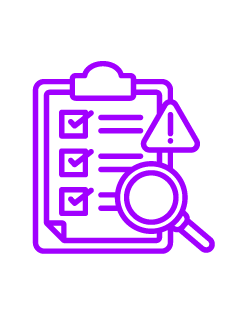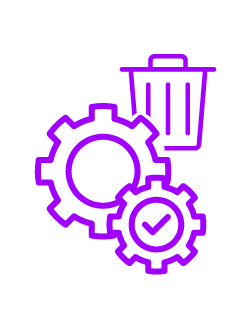Complete Waste & Inventory Management for Medical Facilities

Precision, Compliance, and Safety for Healthcare Waste
Medical facilities generate complex waste types daily—from infectious and cytotoxic to chemical and pharmaceutical.
Chemishield simplifies and secures the entire lifecycle of hazardous waste and critical inventory in hospitals, clinics, and labs
With advanced digital tools for waste tracking, regulatory reporting, and inventory oversight, Chemishield helps healthcare providers protect patients, staff, and the environment—while saving time and reducing operational costs.
The Medical Waste Challenge
Strict medical and environmental compliance (e.g. OSHA, EPA, DOT, HTM07)
Diverse and high-risk waste streams (biohazard, sharps, cytotoxic, chemical)
Limited staff time for waste documentation and compliance audits
Risks of improper disposal or waste mixing that can endanger patients and staff

Built for the Complexity of Any Operation
How Chemishield Solves These Challenges
Chemishield is built with versatile features to suit the needs of any facility, offering both waste management and inventory management modules.

What You Can Expect
Chemishield empowers medical facilities to deliver safer care while meeting strict compliance standards. Here’s how:

Regulatory Confidence
Instantly generate compliant labels, manifests, and digital audit trails to meet EPA, OSHA, and local health regulations with zero paperwork.

Operational Control
Unify waste handling processes across departments—eliminating manual logs, ensuring proper segregation, and preventing overflow or cross-contamination.

Sustainability Insights
Track waste output, flag excess inventory, and contribute to greener, safer medical operations through informed reporting and reduced environmental impact.
See The Results

The Success of Chemishield at The London BioScience Innovation Centre
London BioScience Innovation Centre (LBIC) is a premier hub for life sciences in London, offering top-tier laboratory and office facilities.
June 26, 2025
Frequently Asked Questions
What are the 4 categories of BMW?
Biomedical Waste (BMW) is generally classified into four major categories for safe handling and disposal:
- Infectious waste – Materials contaminated with blood, body fluids, or infectious agents.
- Pathological waste – Human tissues, organs, or body parts.
- Sharps waste – Needles, blades, and other puncture-risk items.
- Pharmaceutical and chemical waste – Expired or unused medicines, disinfectants, and solvents.
Chemishield ensures medical facilities classify and manage these categories correctly, every time. Our platform provides a step-by-step, guided classification system at the point of generation, linking each item to its regulatory category and corresponding container type. This reduces errors, simplifies audits, and ensures healthcare providers remain fully compliant with national and international biomedical waste regulations.
What are the different modes of BMW?
BMW can be segregated into different modes or types based on how the waste is generated and its physical or chemical properties:
- Solid BMW – Contaminated gauze, PPE, dressings, disposables.
- Liquid BMW – Blood, body fluids, or chemical fluids from labs.
- Sharps – Syringes, scalpels, broken glass.
- Pharmaceutical BMW – Expired or unused drugs, vaccines.
- Radioactive BMW – Waste from diagnostic or therapeutic nuclear medicine.
Chemishield maps each mode of waste to its correct handling protocol. Through digital prompts and container-specific guidance, our system ensures correct segregation from the moment the waste is generated, supporting hospital staff, protecting waste handlers, and minimising cross-contamination risks. Chemishield is especially effective in multidisciplinary hospital environments with complex waste streams.
Which is the most efficient method used for the disposal of hospital-generated waste?
The most efficient method depends on the waste type, but typically includes:
- Autoclaving – for infectious solid waste.
- Incineration – for pathological and pharmaceutical waste.
- Chemical disinfection – for liquid waste.
- Encapsulation or shredding – for sharps and plastics.
That said, efficiency isn't just about treatment, it's about managing waste accurately before it gets to disposal.
Chemishield maximises overall efficiency by digitising the entire BMW lifecycle, from classification to contractor pickup. This prevents over-disposal, ensures every item is routed to the correct treatment, and reduces compliance errors. The result is faster operations, lower costs, and a stronger environmental footprint.
What are the steps in the management of BMW?
Biomedical Waste Management (BMWM) typically follows these structured steps:
- Segregation – At the point of generation, into colour-coded containers.
- Collection & internal transport – Within the hospital, ensuring no spillage or cross-contamination.
- Storage – In secure, designated areas with proper labelling.
- Treatment – Via methods such as autoclaving or incineration.
- Disposal – Final disposal by authorised contractors.
- Documentation & reporting – For compliance, traceability, and ESG metrics.
Chemishield digitises and automates each step. It ensures clinical staff classify and label waste correctly, generates audit logs and reports automatically, and integrates with waste contractors to create a seamless, trackable workflow from start to finish. This eliminates paperwork, improves compliance, and gives healthcare administrators full oversight.
What is the 5R in biomedical waste management?
The 5Rs of biomedical waste management promote sustainable and responsible practices:
- Reduce – Minimise waste generation at the source.
- Reuse – Where safe and permitted (e.g., surgical tools after sterilisation).
- Recycle – Segregate recyclables from general BMW.
- Recover – Harness energy or materials where feasible (e.g., heat from incineration).
- Refuse – Avoid single-use products where alternatives exist.
Chemishield supports the 5R approach by giving hospitals data-driven insights into waste generation patterns. Our system identifies overused inventory, supports better stock management, and helps reduce unnecessary disposal. By digitising segregation and tracking, Chemishield promotes recycling and recovery efforts while driving a more sustainable, ESG-aligned waste management culture.


